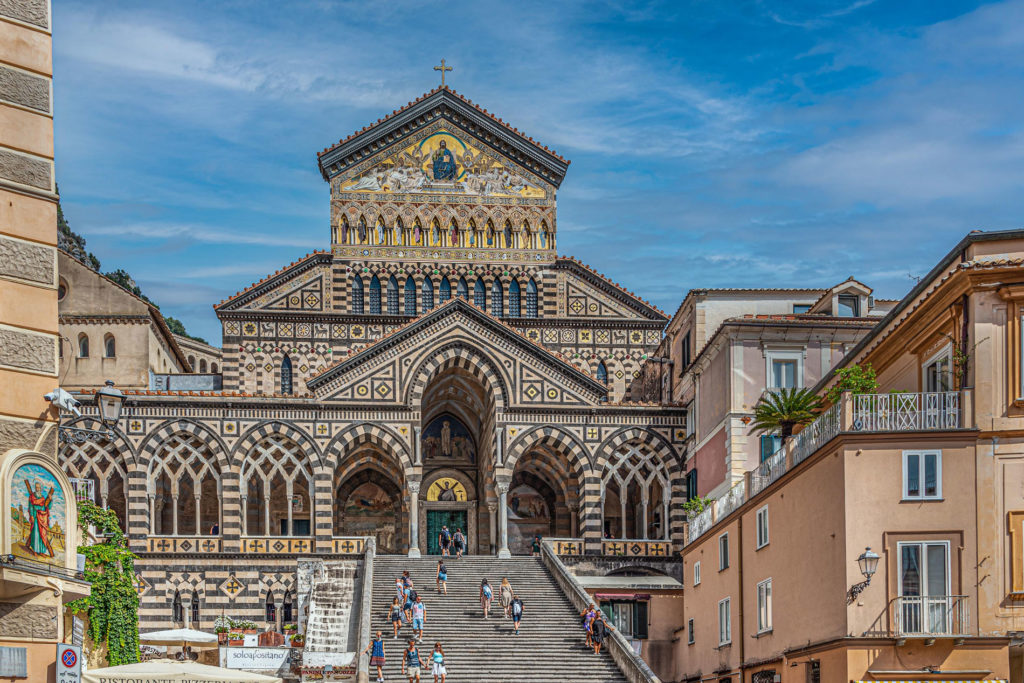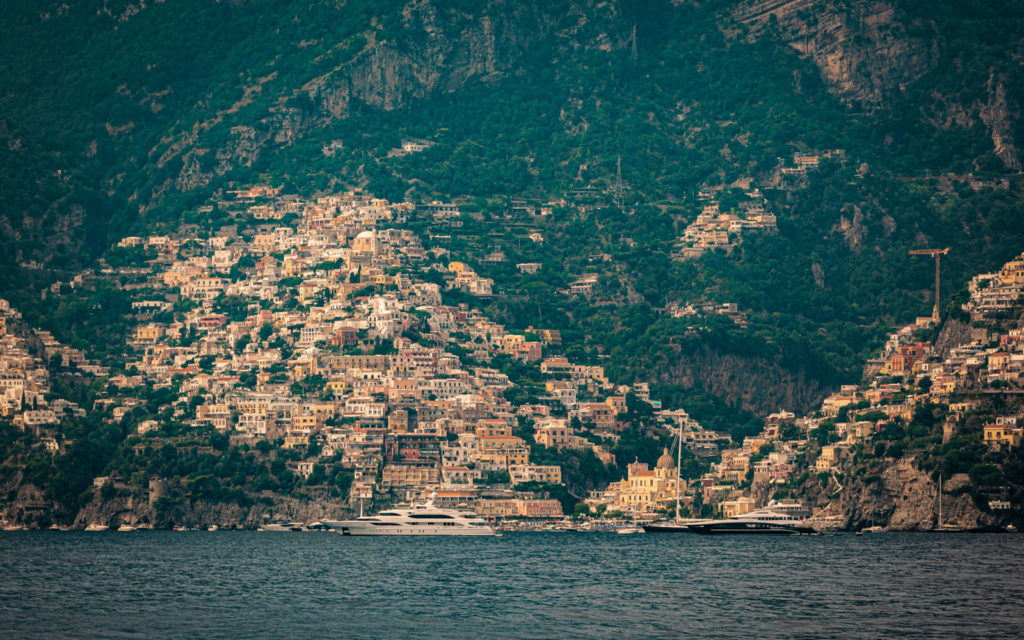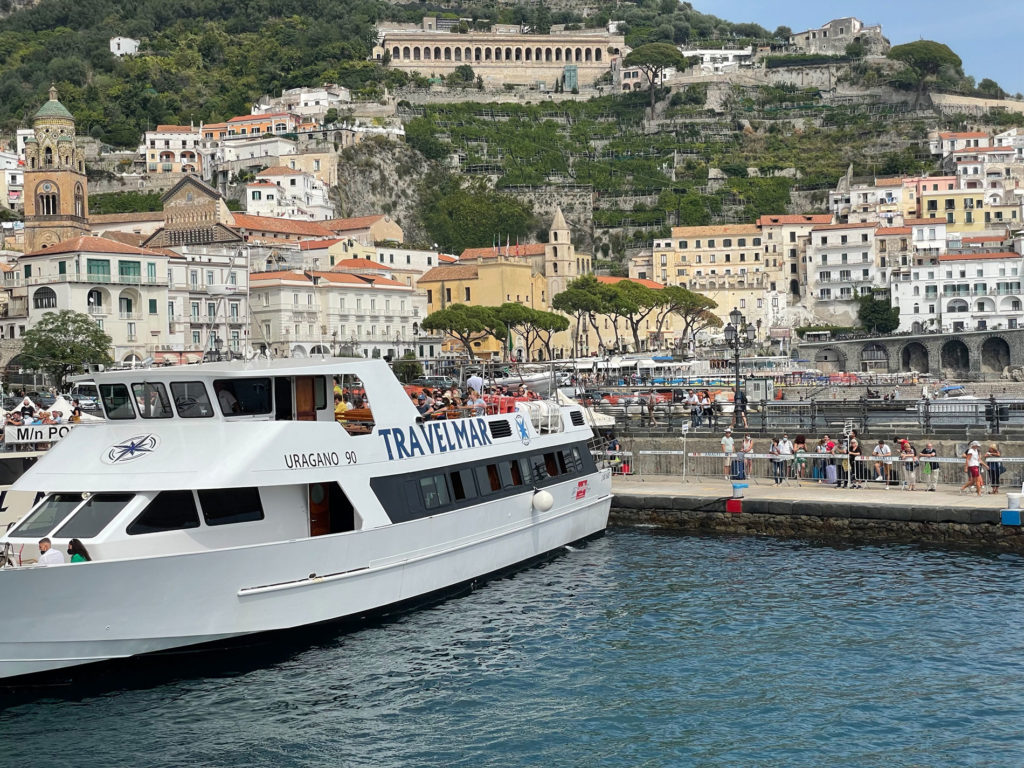May 2022

Crew members secure the ferry to Amalfi’s dock and lower the gangplank. I disembark, along with my tour companions, after the 45-minute sail from the town of Positano along Southern Italy’s acclaimed Amalfi Coast. We pass the queue of tourists and locals eager to board the boat and grab our now empty seats for the continued trip farther down the coast to Salerno and beyond.
“Picture postcard perfect!” –– a clichéd phrase that seems to have been created to describe this coastal paradise of this Mediterranean landscape. A dozen towns and villages nestled along the Tyrrhenian Sea’s shore slid by as the ferry followed the coastline. Enormous, almost vertical, cliffs tower over them. Sheer rock threatens to tumble down and obliterate these quaint settlements of narrow streets and alleys lined with ancient homes and churches, lemon and olive groves, and docks and watercrafts bobbing in the blue waters that reflect a cerulean sky. Dramatic and breathtaking scenes filled with an underlying tension between nature and humanity produces a sense of awe. Now I understand why travelers speak about this part of the world with reverence.
Our guide ducks into one of Amalfi’s dark and narrow covered alleys, past the back door of a restaurant where I catch a quick glance of chefs performing their kitchen magic. Bright sunlight beams ahead, and we burst onto the lively Piazza del Duomo, central gathering place for this town of 5,000 inhabitants. Strolling tourists gawk at the medieval buildings, licking cones of gelato; merchants entice them into their shops to sell clothes, crafts, lemons and the ubiquitous limoncello liquor, local sweet treats, and pedestrian souvenirs. However, the piazza’s main event sits on a promontory 62 steps up––elegant nineth century Amalfi Cathedral, a breathtaking work of art created over twelve centuries. As are all Roman Catholic churches, the cathedral is dedicated to a saint, and St. Andrew presides here.
Singers, spinsters, maidens, fishmongers, fishermen, women wanting to become mothers, gout, and sore throats––they make up Saint Andrews’ core flock. He’s also patron saint of Scotland, Greece, Russia, and Barbados. He and his brother Simon Peter, both fishermen, were first to sign up with Jesus to be apostles. Andrew sure pulled a heavy workload. His remains reside here, underscoring his prominence in Amalfi.

The Cathedral’s structure represents several architectural periods. Over 1200 years, designers and builders added to and rebuilt it several times with a final “new” late nineteenth century façade attached to its front, displaying Italian Gothic and Arab-Norman styles. The building’s previous façade collapsed.
At one time, the city of Amalfi was more than just a pretty face. From the nineth to eleventh centuries, Amalfi and three other powerful Italian republics––Venice, Genoa, and Pisa––dominated Mediterranean commerce. Its population rose to almost 80,000. Eventually, invasions by Normans and later Pisans weakened the republic. A fourteenth century tsunami destroyed the port and lower town, and Amalfi languished for hundreds of years.
Now designated as a UNESCO World Heritage site, Amalfi found its footing again in modern times as a spectacular tourist mecca.


